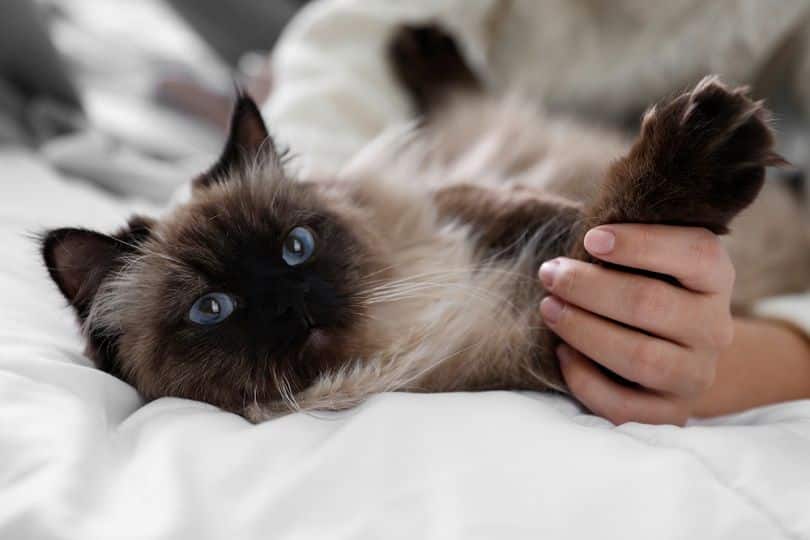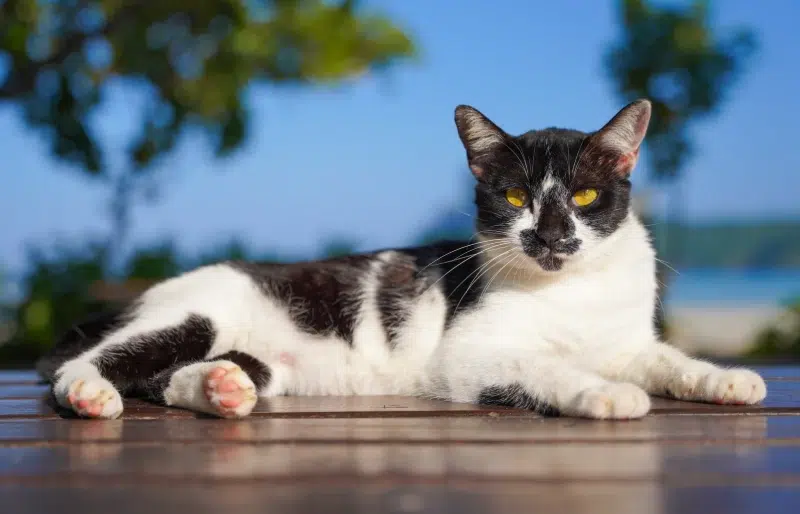Cats are low-maintenance pets that don’t need as much attention as dogs. They’re independent animals that want to do things how they want to do them. Cats aren’t the kind of pets that will obey your every command like dogs, but some breeds are more open to training than others.
Some cats have the playful nature of a dog, and they’re ideal for pet owners who want to have a close relationship with their cats. If that sounds like you, the following 20 breeds are some of the most playful cat felines around.
The Top 20 Most Playful Cat Breeds
1. Abyssinian
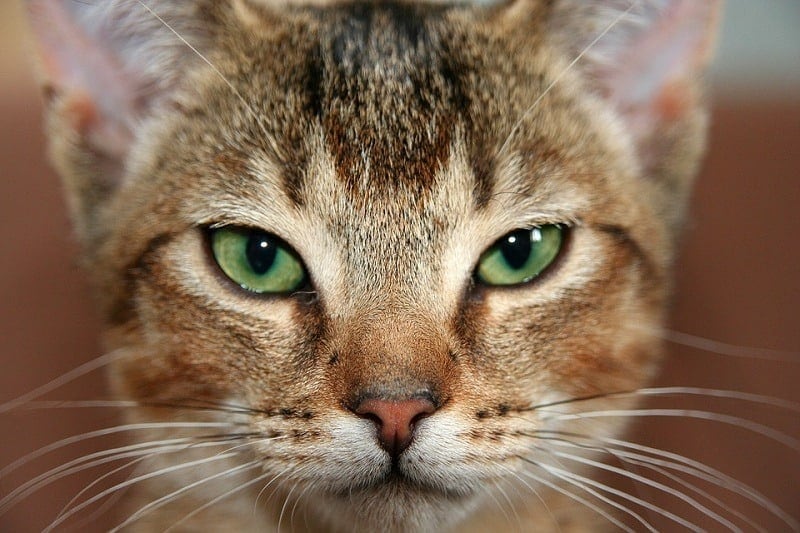
Abyssinians have a distinct tabby coat and high levels of intelligence. They’re also some of the most extroverted cats. In fact, they can get depressed if they don’t get enough playtime and attention from their owners.
Their attachment to their owners has been called “dog-like,” in complete contrast to the temperament of most cats that seem to tolerate human company rather than welcome it. They’re one of the most playful breeds!
2. Balinese
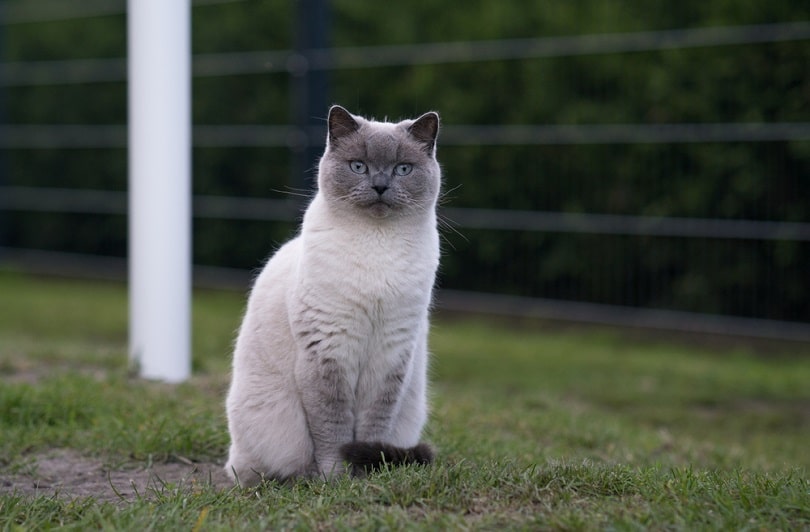
The muscular, lean, and long Balinese is a beautiful cat with an outgoing personality. They share many traits with the Siamese, who they’re closely related to. Balinese cats are incredibly communicative and want to tell you about everything.
They’re also entertaining to watch when they engage in hilarious antics. They want to play all the time and love games like fetch.
3. Bengal
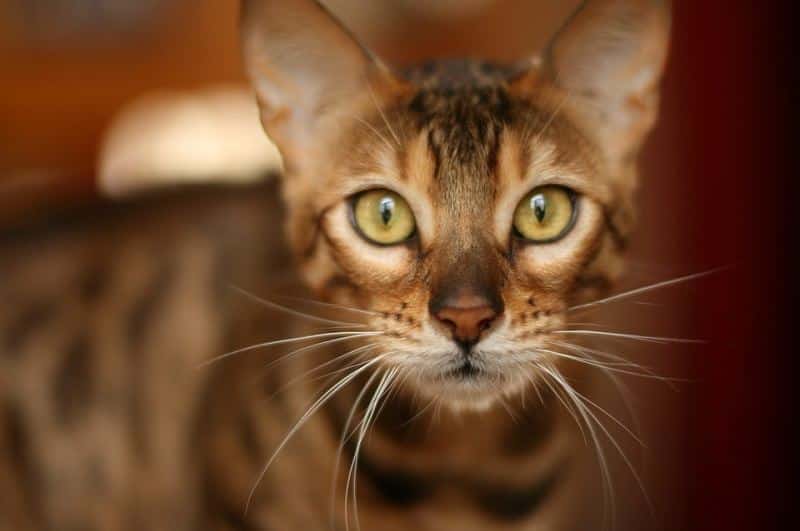
If you saw a Bengal cat in the wild, you’d think it was a wildcat. They have a very distinct pattern that looks just like a leopard. They were created by crossbreeding several domestic hybrids, including the Egyptian Mau and the Asian Leopard cat. The Bengal is loaded with excited energy that you’ll need to expend through vigorous playing and exercise.
4. Birman
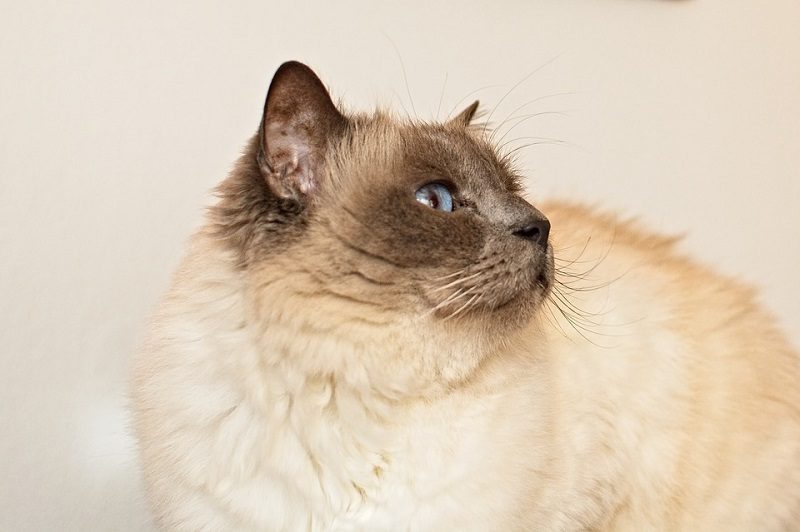
The playful Birman isn’t as outgoing as other breeds on this list, but that doesn’t mean they don’t want to play! Instead, it means they’d prefer to play with just one person: their owner. These cats bond very closely with their owners, but they don’t show much interest in other people.
5. Burmese
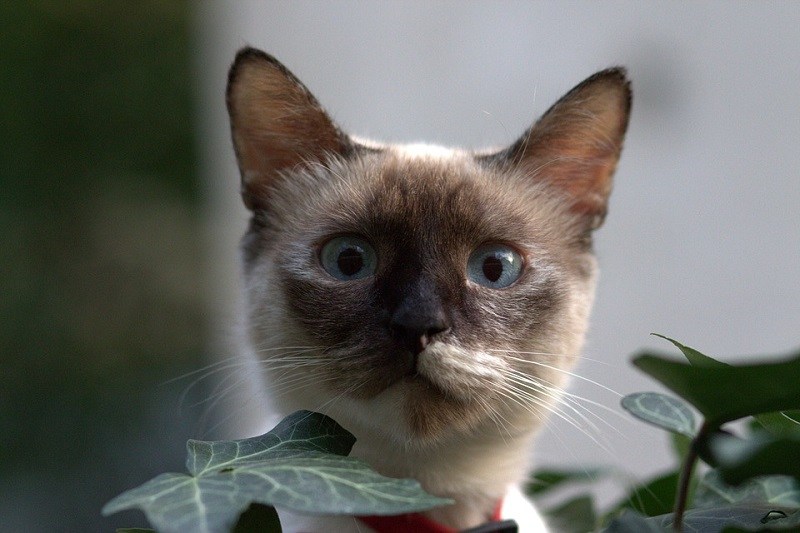
As you might guess from the name, the Burmese cat originated in Burma, near the coast of Thailand. They’re a round cat with a round head and face, round eyes, round chin, and even round feet.
As they age, Burmese cats calm down, but younger Burmese cats are very curious and active, so you’ll find they want to play all the time. When they’re not playing, they’re getting into trouble, letting their curiosity get the better of them!
6. Burmilla
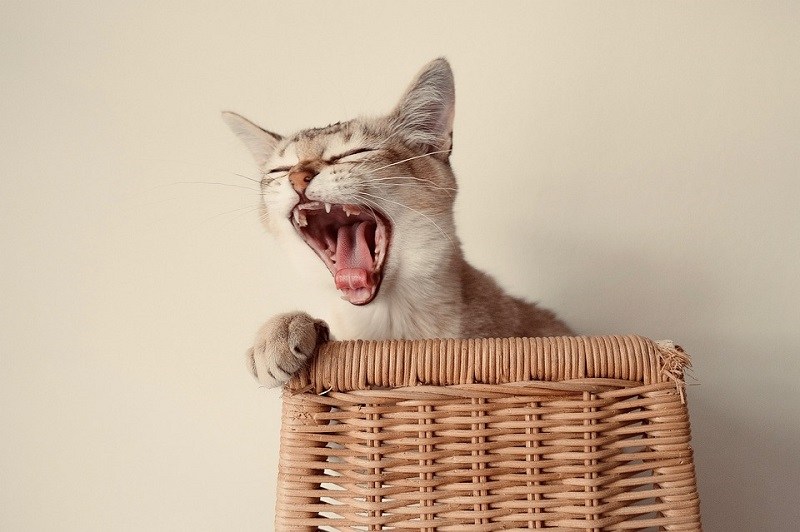
Burmillas are a very rare breed that’s only recently been developed. They’re still an experimental breed and haven’t been accepted by all major registries. They require minimal care, but they have affectionate and loving personalities that make them instantly endearing.
Burmillas are lazy cats, except when it’s time to play. When playing, you’ll see their personalities come to life.
7. Colorpoint Shorthair Cats
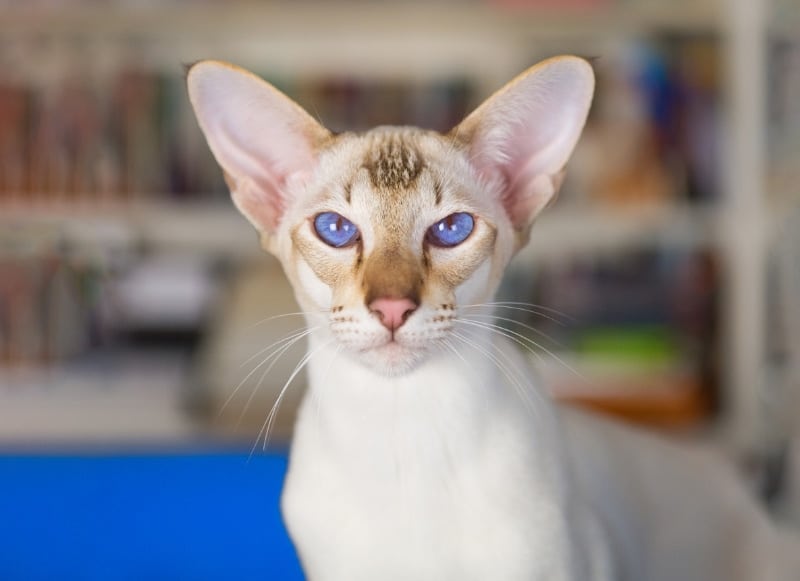
Colorpoint Shorthairs are described as affectionate, loyal, and devoted to their owners. They’re a very vocal breed that wants to share every thought with you. They are very smart and can easily learn games like fetch, which they enjoy. Once they learn a few games, Colorpoint Shorthairs will be very demanding about their desire to play.
8. Cornish Rex
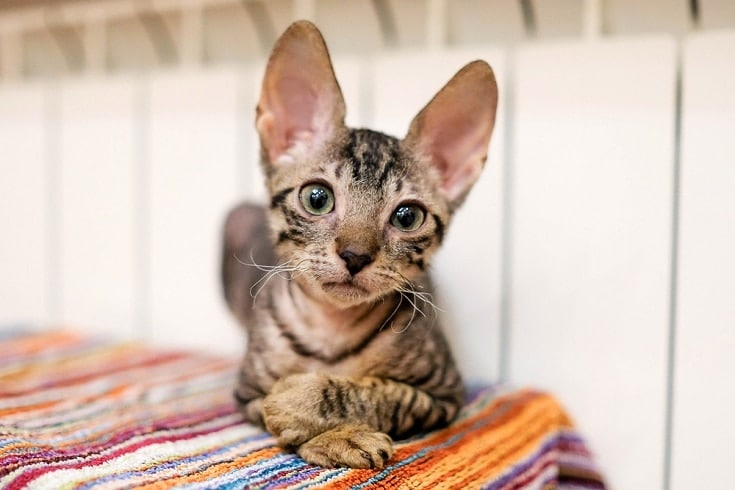
Cornish Rexes are covered in a soft down, but they don’t have hair like other cats. Because of their unique coat, they are temperature-sensitive and must be kept indoors in a warm, dry climate. They’re often called the Greyhounds of cats because of their lean appearance and galloping gait. While most cats will grow out of their playful kitten stage, Cornish Rexes remain playful for life.
9. Devon Rex

The Devon Rex is a very unique-looking feline. They have very short hair, slight, slender bodies, and ears far too large for their small heads. They’re incredibly intelligent and are capable of learning advanced tricks and commands.
Motivating them to do so can be difficult, however. What’s not difficult is getting a Devon Rex to play. These people-oriented cats are always ready for a good play session with their people.
10. Japanese Bobtail
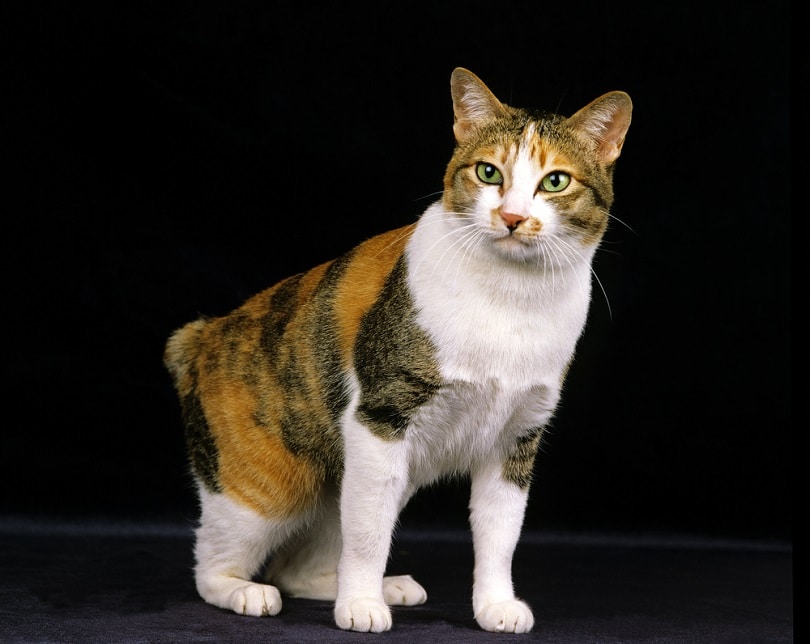
Many cats have bobbed tails, but the Japanese Bobtail’s bobbed tail is unique. It looks more like a rabbit’s tail than the bobbed tail you’ll find on other breeds. The Japanese Bobtail is an ancient breed that often appears in traditional Japanese art and folklore.
They’re very affectionate animals that make great family pets. They’re known for being exceptionally playful, which makes them great with children.
11. Maine Coon
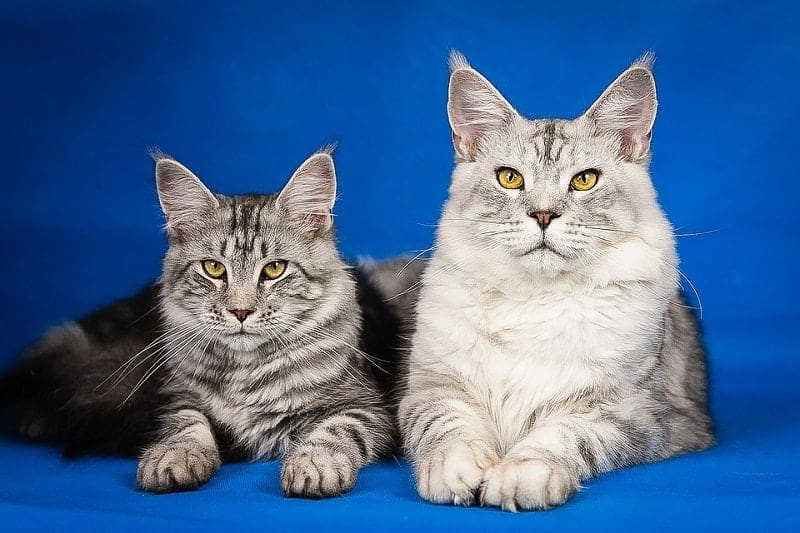
The Maine Coone is the largest of all domestic cat breeds, and they possess impressive hunting skills. They’re one of the oldest breeds that naturally developed in North America.
They are laid-back and friendly, which is why many refer to them as the “gentle giants.” They’re often said to have many dog-like traits because of how playful and affectionate they are with their family.
12. Manx

There’s something very special about Manx cats that sets them apart from all other species of domestic cats; they have no tail! Many cats have a bobbed tail, but the Manx has no tail at all.
Some have a tiny stub in place of a tail, but for the most part, the Maine Coon is tail-free. They’re often compared to dogs because of their highly social and playful behavior.
13. Munchkin

The Munchkin is one of the most unique-looking cats, thanks to their incredibly short, stumpy legs. Unfortunately, they can suffer from health problems, which is why many cat associations refuse to accept the breed. Still, they’re a popular breed due in part to their playful nature that makes them fun to keep as pets.
14. Selkirk Rex
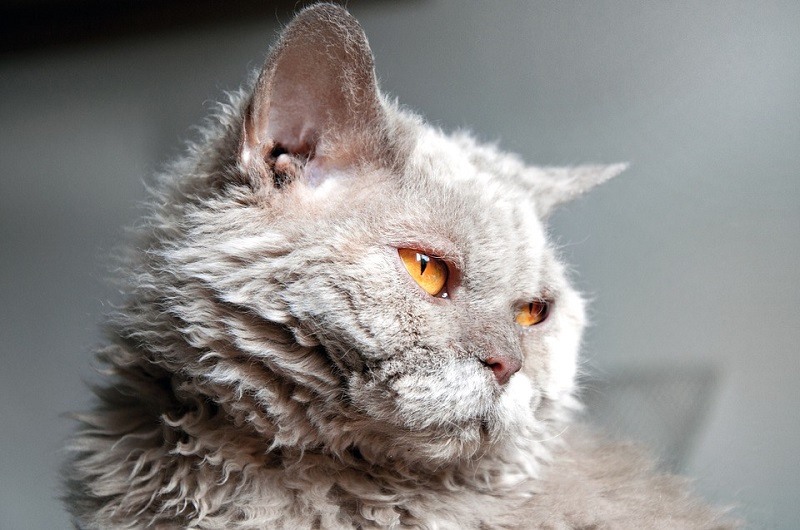
The Selkirk Rex has been given the nickname “cat in sheep’s clothing.” They have one of the most luxurious coats in the cat family, accompanied by a laid-back attitude that makes them excellent companion pets.
Though they’re relatively calm creatures, Selkirk Rexes can also be silly and clownish when they play around.
15. Siamese
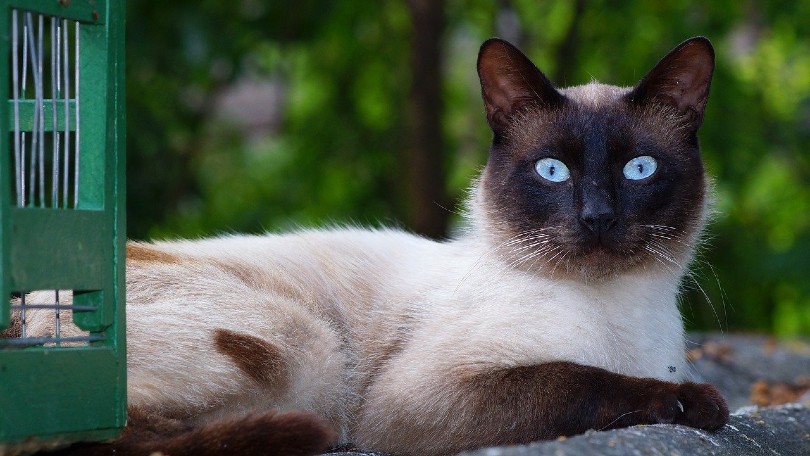
The Siamese was one of the first Asian breeds of cats to be recognized. They come from present-day Thailand, which used to be Siam; hence the name Siamese. In the 1800s, the original Siamese was one of the most popular breeds worldwide.
Modern Siamese cats don’t bear much resemblance to their ancestors, and there’s a push to rename the original breed as the Thai cat. But what makes these cats so popular is their deep love of human interaction and playtime.
16. Siberian

Siberians are an ancient breed that originated in Russia centuries ago, which is why the breed is also known as the Moscow Semi-Longhair. It’s believed that the Siberian is the ancestor of all modern-day long-haired cats. Despite their long coats of luxurious hair, they are hypoallergenic, making them a great choice for allergy sufferers.
17. Sphynx
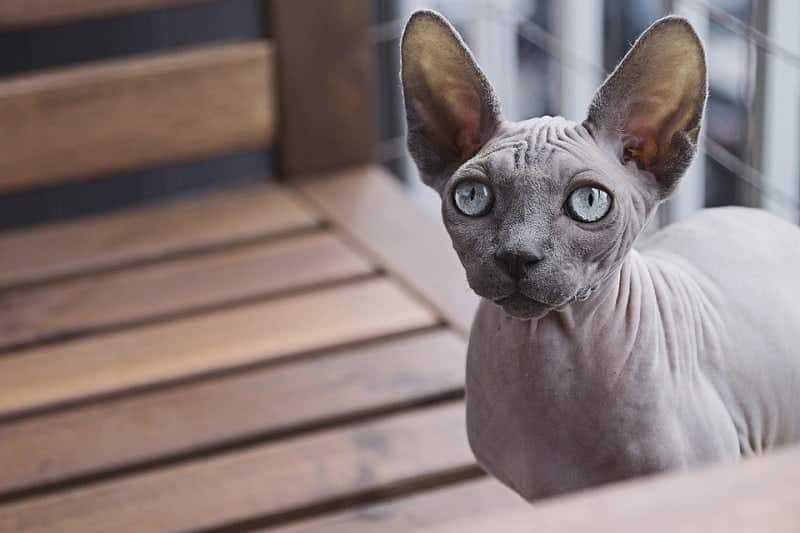
The Sphynx is one of the most easily recognizable breeds of cats thanks to the complete lack of hair on their bodies. They have a fine layer of down, but it’s not really visible.
They have colored markings like many other cats, but they are on their skin in the same places they’d occur if there were fur. Sphynxes are known for their extroverted personalities. They have plenty of energy and are naturally curious, which can combine to make a very entertaining pet.
- Think this breed is cute? Check out the Top 18 Cutest Cat Breeds (With Pictures)
18. Tonkinese
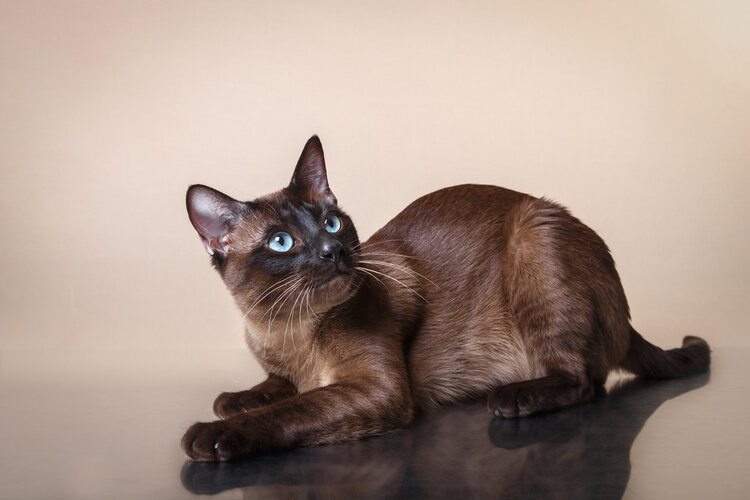
Tonkinese cats are the result of crossing a Siamese and a Burmese. Like both parents, Tonkinese cats are exceptionally playful and have joyful personalities that make them a pleasure to keep as pets.
They’re highly intelligent and people-oriented, but they’re also curious and interested in everything around them. However, they are high-energy cat that get bored quite easily, especially when they’re left alone.
19. Turkish Angora
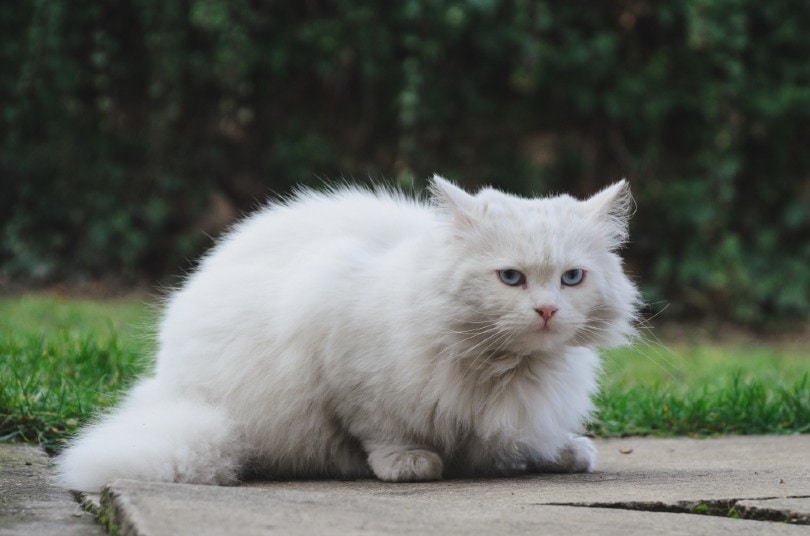
This ancient breed originated naturally in Turkey centuries ago, but they’ve only been documented since the 1600s. Turkish Angoras bond closely with their owners and want to be part of everything they do. They need to play every day and often try to amuse you with their hilarious antics.
20. Turkish Van

Unlike the Turkish Angora, the Turkish Van was bred by humans. They were developed by crossing several cats from Turkey, which resulted in the unique and rare van pattern that gives them their name.
Early Turkish Vans were known to be quite aggressive, but that’s no longer the case. Now, the breed is known for being friendly with all people. They’re very social and playful and get along well with everyone, including dogs.
Final Thoughts
Although some cats prefer to be alone for most of the day, our list includes some of the most playful and friendly felines around. We must also mention mixed breeds since they can be just as lovable and fun-loving purebred cats. Some of the cats we discussed, like the Bengal, are expensive if you purchase them from a breeder. However, you can save money and provide a loving home for a playful kitty if you adopt one from a local shelter and rescue.
- You Might Also Be Interested In: 10 Most Vocal Cat Breeds (With Pictures)
Featured Image Credit: New Africa, Shutterstock
Contents
- The Top 20 Most Playful Cat Breeds
- 1. Abyssinian
- 2. Balinese
- 3. Bengal
- 4. Birman
- 5. Burmese
- 6. Burmilla
- 7. Colorpoint Shorthair Cats
- 8. Cornish Rex
- 9. Devon Rex
- 10. Japanese Bobtail
- 11. Maine Coon
- 12. Manx
- 13. Munchkin
- 14. Selkirk Rex
- 15. Siamese
- 16. Siberian
- 17. Sphynx
- 18. Tonkinese
- 19. Turkish Angora
- 20. Turkish Van
- Final Thoughts

